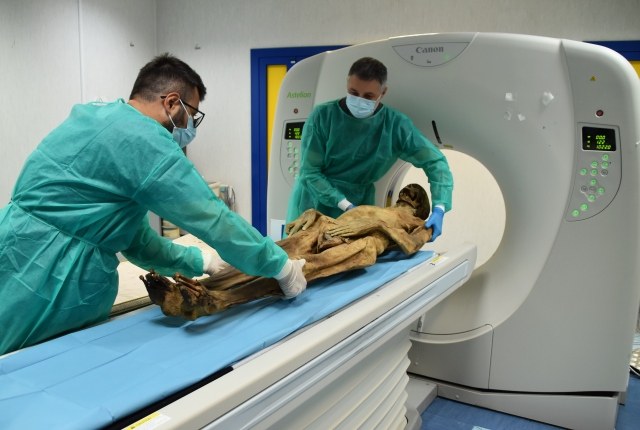Analysis of the mummified remains of the Venerable Giacomo Torno, a Theatine cleric regular who lived in Naples in the mid-16th and early 17th centuries, has revealed the world's oldest documented case of a Kennedy Terminal Ulcer (KTU), a type of pressure injury that can occur in the period immediately preceding death.
The investigation, published in Dermatology Reports, was carried out by a research group led by academics from the University of Bologna on the initiative of Father Aleksander Sebastian Iwaszczonek C.R. and the current Theatine Fathers of the Basilica of San Paolo Maggiore in Naples, as part of the broader process of Giacomo Torno's beatification that has gained momentum in recent years.
"Having been fortunate enough to have 18th century historical sources at our disposal, supplemented by autopsy data, we can confidently claim to have identified the world's oldest documented case of Kennedy terminal ulcer", - says Gianandrea Pasquinelli, director of the Department of Medical and Surgical Sciences at the University of Bologna, who coordinated the study. "These results show that working in synergy with other specialists is a winning choice".
Giacomo Torno, born in Naples between 1539 and 1541, entered the Order of clerics regular (Theatines), housed in the Basilica of San Paolo Maggiore on 30 October 1558. From that moment on, he stood out for his great humility, gentleness and patience. He was one of the confessors of Saint Andrew Avellino and assisted him until his death.
Historical accounts show that on 4 December 1608, Torno was struck by a sudden illness that left him suffering and infirm. He died a few weeks later, on 18 January 1609.
A neurological pathology of an ischaemic nature that affected the Venerable Torno forty-five days before his death was recognised in the historical sources by Marco Longoni, Director of the Cesena-Forlì Neurology and Stroke Unit and professor at the University of Bologna, and one of the authors of the study. The stroke was probably caused by a vascular brain injury in the right hemisphere: a sudden, acute ischaemic event that may have caused a violent fall and the fracture of the coccyx.
When he regained consciousness, Giacomo Torno had partially lost the functionality of his upper limbs and, in all likelihood, the ability to walk. Historical accounts speak of movements of the upper limbs 'induced by the devil,' which could be interpreted as epileptic seizures resulting from complications of the stroke. What is certain is that Torno was bedridden for a long time after the ischaemic event, suffering severe pain in his affected limbs. Accounts report that after his death, his body was found wounded 'especially from a large ulcer, which he had under his loins, which came to him after his death.'
"It was during the direct investigation of the mummified body that we noticed this lesion," explains Mirko Traversari, a paleopathology technician at the University of Bologna and first author of the study. "Although not particularly common, it is not unusual to find this type of evidence at the level of the sacrum in particularly well-preserved bodies. What intrigued us, however, was the complete absence of other pressure injury on the body, which usually occur in conjunction with a sacral lesion".
The shape of the imprint left by the ulcer, combined with historical sources suggesting that it appeared close to death, has allowed researchers to reconstruct the presence of a Kennedy terminal ulcer: a lesion associated with the process of organic decay leading to the patient's death.
"The shape and position of the lesion gave us the clue, but it was the careful analysis of contemporary historical sources that gave us the confirmation we were looking for", says Davide Melandri, professor at the University of Bologna and director of the Centro Grandi Ustionati Romagna (Romagna Major Burns Centre), who took part in the study. "In this way, we were able to accurately reconstruct the exact sequence of events leading up to the death of the Venerable Torno and to identify the lesion detected in the analysis of the mummified body as a Kennedy terminal ulcer".
The study was published in Dermatology Reports under the title 'A case of Kennedy terminal ulcer in a 17th-century Italian mummy.' Participating for the University of Bologna were Mirko Traversari, Elisabetta Cilli, Gianandrea Pasquinelli, Davide Melandri and Marco Longoni. The research was made possible by a fruitful collaboration between the Italian Paleopathology Group, coordinated by the L'Aquila-based anatomist Luca Ventura, and the team from the University of Naples 'Federico II', directed by Claudio Bellevicine, Professor of Pathological Anatomy.


